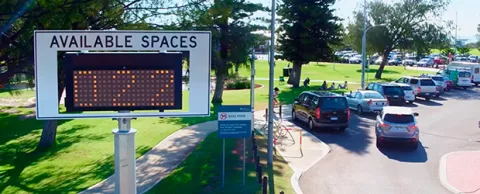
Our work at the Council on advocating for greater engagement and alignment between the digital, built and natural environments is about to be showcased in Western Australia. Through our member company Telstra, Tom Simpson Park is about to become a national showcase.
We have continued our advocacy at SCCANZ on the importance of bringing the smart cities agenda to the streets, literally, as well the supporting public places and spaces that contribute to the liveability of our cities. These parks, plazas, and footpaths are public space, and are perfect for engaging the community around smart cities technologies and the Internet of Things.
For businesses, local government, and non-profit groups, having an IoT backbone throughout our streets and public places gives us the ‘eyes and ears’ that can help us understand how our cities are performing, and where we can make the most impactful social change investments. — Adam Beck
Tom Simpson Park is a gorgeous 5-star city park on the coast of Western Australia. With rolling white sand dunes and a sense of tranquillity that only comes from being apart from a thriving business district, some call it the best beach in the greater Perth area.
And soon it will be the smartest park in all of Australia.
The city of Joondalup is outfitting the park with sensors and an Internet of Things backbone, allowing park managers to deploy their resources much more efficiently while being able to measure a number of environmental factors in real-time.
More efficient park management
Once the system is installed, the park will function like a mini-smart city. Nearly three dozen rubbish bins will be equipped with sensors that will tell the city when it’s time to empty them. Aside from making collection more efficient — both preventing the bins from overflowing and eliminating trips to bins that don’t need to be emptied — the city will use the bin information as a data point to determine which sections of the park see the most (and least) traffic.
Environmental sensors throughout the park will also give managers key information about light, temperature, noise, humidity and air pollution in real-time. All the sensors will feed their data into a dashboard and analytics tool that will help the city optimise how resources are deployed.
Managing the park for peak demand
The park is a bit of an oasis for residents in the busy communities nearby, turning the park into a popular attraction. Thousands use it each month. But the sensors and real-time data they provide will help the city better manage the demand.
Especially on summer weekends, roads can get congested with people trying to get to the park. Another part of the project involves monitoring every parking space at an adjacent lot. Beachgoers will be able to use their mobile devices while they’re on their way to see where parking spaces are available so that they can head straight for them or make other plans. This reduces idle time and therefore vehicle emissions.



